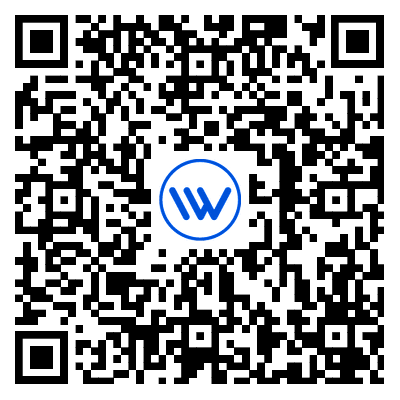Example of Upgrading the Operation and Maintenance Monitoring System in a Third Class Hospital
Customer Introduction
The case hospital is a large-scale tertiary Grade A comprehensive hospital under the jurisdiction of a certain province. The hospital covers an area of more than 300 acres, with a total construction area of about 260000 square meters, 1500 open beds, and a total asset value of about 1

Pain point analysis
As a large tertiary comprehensive hospital, the client hospital has a relatively complete department system with a high degree of informatization, equipped with a series of information systems such as Hospital Information System (HIS), Electronic Medical Record System (EMRS), Clinical Information System (CIS), Picture Archiving and Communication System (PACS), Radiology Information Management System (RIS), etc. The medical information structure system is complex
The numerous departments and complex information systems, coupled with the continuous promotion of the domestic innovation process, reflect on the operation and maintenance level, namely the large number of IT resources, complex categories, and the high pressure of operation and maintenance brought about by the heterogeneous IT environment. Specifically:
Firstly, due to the imperfect existing operation and maintenance monitoring system, especially for domestic information and innovation equipment, there may be issues such as unsupported, incomplete (with omissions), and untimely monitoring, or requiring a long time and high learning costs to adapt to information and innovation equipment, which cannot achieve one-stop monitoring. The information department cannot control the overall operation status of the system as a whole;
Secondly, it is difficult to locate. Due to the limitations of operation and maintenance tools, when a fault occurs, operation and maintenance personnel often cannot locate the fault point in a timely manner. They need to rely on manual layer by layer analysis, extensive retrieval and troubleshooting to find the fault point and cause before proceeding with fault handling, which is relatively inefficient;
Finally, the problem and solution of the malfunction cannot be entered online, lacking a mechanism for knowledge accumulation and sharing, and the solution cannot be reused. It heavily relies on the personal work experience and technical ability of the operation and maintenance personnel, making it difficult for different personnel to quickly solve similar malfunctions.
Faced with the above situation, the client hospital feels that the operation and maintenance system lacks support for the hospital's information architecture, and urgently needs to upgrade and transform the operation and maintenance monitoring system.
scheme
Based on the existing operation and maintenance system, pain points, and monitoring needs of the client hospital, LeWei has tailored a one-stop intelligent operation and maintenance monitoring solution, built a unified monitoring platform, introduced intelligent alarm management system, visual management system, network topology and report management system, and enhanced its operation and maintenance management capabilities from multiple dimensions, providing stronger support for business systems.

Framework Introduction
The unified monitoring platform provides one-stop operation and maintenance monitoring services from bottom level resource monitoring and data collection to centralized monitoring and alarm management, as well as visual display and reporting.
At the level of resource monitoring, monitoring of data centers, networks, cloud computing, applications, virtualization, containers, etc. is not a problem, and it also supports the integration of data pushed by third-party monitoring systems,There is no need to demolish and rebuild the entire operation and maintenance monitoring system. By integrating and transforming, the global monitoring effect can be achieved, deployment efficiency can be improved, and project construction expenses can be effectively reduced.
At the level of collection and adaptation, after years of technical research and accumulation, it has accumulated compatibility with dozens of protocols and agents, and can adapt and collect data from 500+manufacturers and 2000+device models,We have achieved industry-leading levels in monitoring resource types, monitoring indicator quantities, accuracy, and timeliness.
In terms of monitoring and alarm, integrate the existing scattered monitoring system to form a centralized and unified global monitoring, and aggregate alarm information from multiple third-party platforms to form a centralized alarm.
In addition, the unified monitoring platform also provides several visual management tools, including network topology, business topology, screen view, etc., which can provide support for fault diagnosis and decision analysis; Knowledge base for sustainable consumption, accumulation and sharing of solutions; A reporting system that fully utilizes monitoring data for anomaly analysis and trend prediction.
Overall, the unified monitoring platform can provide the following capabilities:
Global control capability:
By building a unified monitoring platform, hospital business systems and IT infrastructure can be monitored and centrally managed, making it easier to control the overall operational status.
The unified monitoring platform divides all IT resources of the hospital, including innovative and non innovative equipment, according to operating systems, network devices, databases, middleware, virtualization, servers, storage, etc., to achieve unified monitoring of hundreds of objects;
It can intuitively view device types, quantities, alarm categories, alarm quantities, etc., and can also configure resource consumption and alarm components, such as CPU and memory consumption TOPN views, latest alarm views, etc.

The platform supports centralized object display and automatic classification display, which can intuitively see whether the current IT system is running normally. Operations personnel do not need to log in to each system or device separately for tedious inspection work, and organically combine monitoring and management to improve the operation quality of the entire IT system and resources, enhance the stability and reliability of IT infrastructure operation, and improve the IT management level of the information department.
In the monitoring system, the monitoring homepage can be highly customized, enabling login and maintenance, quickly understanding the entire system status, and making resource usage and system alarm situations clear at a glance.
Abnormal perception ability:
Abnormal perception includes two abilities: fault alarm and fault prediction
Fault alarm is aimed at sudden fault situations, such as hardware damage, network interruption and other unpredictable and uncontrollable factors. Through real-time monitoring and sending alarm information, it reminds operation and maintenance personnel to respond and solve the fault.
Fault prediction mainly targets resource consumption, such as storage consumption, CPU performance consumption, etc. It can be managed through pre-set thresholds, and an alarm will be triggered when the resource consumption reaches the set threshold; More importantly, AI intelligent algorithms can be used to estimate the trend of business resource consumption, infer the threshold alarm triggering time to a certain extent, and proactively allocate resources.
The centralized alarm function provided by the unified monitoring platform covers multiple dimensions such as real-time alarms, comprehensive alarms, and alarm analysis, and supports alarm upgrading, alarm convergence, and diversified alarm notifications. It is committed to comprehensive alarm protection and level classification, while ensuring the traceability of alarms, providing a guarantee for true 7 × 24-hour continuous monitoring, thereby significantly reducing the work pressure of operation and maintenance personnel.

In addition, the operation and maintenance team can also view recent alarm trends and the distribution of alarm levels, in order to quickly obtain monitoring information of IT system resources and timely grasp the occurrence time and distribution of the entire system failure problem. In this process, the operations team can also uncover the patterns and types of system failures, predict possible future failures, develop more comprehensive fault response strategies, and further enhance the reliability of the IT system. In addition, for certain types of faults, the team can obtain detailed historical operating data of the equipment in order to solve the problem from the root and find preventive methods.

Visualization ability:
The unified monitoring platform is equipped with various data display methods, which transform complex data into easily understandable visual charts, such as configurable network topology and business topology, which can be presented through screen casting configuration to timely reflect key concerns such as network health status and dedicated line link status. When an abnormality occurs, the fault can be quickly located, greatly reducing the time for fault location and troubleshooting, and providing effective basis for solving the fault
Based on the product concept of simplifying operations and improving usability, the unified monitoring platform has built-in multiple display templates with personalized settings, including dashboard, cool screen, Rubik's Cube and other application modes, as well as various visualization templates such as dual axis chart, bar chart, map, pie chart, circular pie chart, sector chart, nested chart, single value chart, droplet chart, scatter plot, bubble chart, radar chart, dashboard, etc., which are ready to use out of the box.
Network topology capability:
The solution has a high-level network topology function, which plays a core role in the information system. Its core value lies in intuitively displaying the network operation status, which can provide directional and rhythmic guidance for the development planning of hospital information architecture. Based on this, the scheme adopts LLDP protocol for configuration, which can achieve automatic identification, association, and precise matching of network devices, thereby forming a complete network topology diagram.

Personalized reporting system
According to the specific needs raised by customers, the unified monitoring platform also has a built-in personalized reporting function, which can generate and store daily and weekly reports on the bandwidth and traffic performance of core switch ports; At the same time, daily and weekly reports can be provided for specific business systems to display data trends and performance analysis results; Through the alarm statistics function of the report, observe the operation status of the entire information infrastructure from different perspectives, such as operating system alarm statistics, network device alarm statistics, etc., and display them according to different categories and levels

Customer revenue
- The unified monitoring platform has built an intelligent operation and maintenance mode based on comprehensive IT resource sorting, full stack monitoring, and real-time alarm, completing the integration and upgrade of the original monitoring and alarm system, creating a mature operation and maintenance system with complete functions and high flexibility, and realizing one-stop operation and maintenance management from data collection, status monitoring, alarm management to fault diagnosis and visual analysis decision-making;
- Realize one-stop monitoring access. The monitoring system is deployed in domestic operating systems, which can achieve monitoring access and alarm push functions for information and innovation equipment, bid farewell to clutter and chaos, and achieve standardization;
- To provide stable operational assistance for business systems, optimize the daily workflow of the operations team, improve overall operational efficiency and the overall operational efficiency of the hospital, and provide a better IT service environment for the hospital;
- Provide more efficient data support, optimize information resource allocation, continuously promote customer information development, and provide clear guidance for subsequent information construction.
- In addition, after the establishment of the unified monitoring platform, it will help the client hospital successfully pass the 2020 National Medical Interconnection Four Class Assessment!

- Case Interpretation | Construction Practice of Comprehensive Operation and Maintenance Monitoring Platform for a Large Household Enterprise-Lewei Software
- Practice of Building Intelligent Operation and Maintenance Platform for International Securities Enterprises
- Case Study: IT O&M Platform for a Listed Special Materials High-Tech Firm
- Case Interpretation: O&M System Construction for Listed Mfg. Enterprise
- Case: HK Diversified Finance Firm’s Monitoring & Network Mgmt Platform
- Case: Unified Monitoring & Alerting Platform in “Double First-Class” Uni

